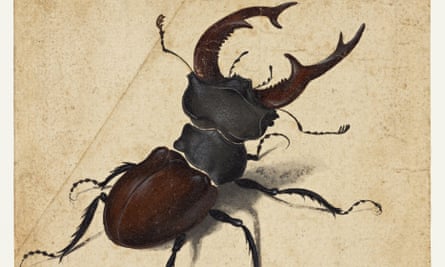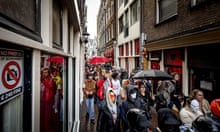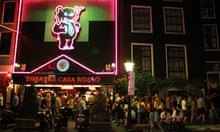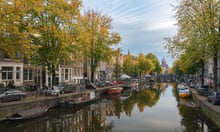No vacuum cleaners and no feather dusters: that’s the order that has gone out to cleaning staff at the Rijksmuseum in Amsterdam.
As part of an exhibition exploring the changing perceptions of creepy-crawlies in art and science through the ages, the national museum of the Netherlands has been allowing its crevices and corners to go wild for the last three months.
Julia Kantelberg, assistant curator, said they had been encouraged by Tomás Saraceno, an Argentinian artist based in Berlin, whose work is appearing in the show, to treasure the accumulation of spider webs wherever they may emerge.
The webs are being treated, she said, as pieces of art, to be venerated – for now, at least – as if they were The Night Watch by Rembrandt or The Milkmaid by Vermeer, two of the museum’s headline masterpieces.
“Saraceno challenged us to acknowledge the spider webs that we are already cohabiting with in the Rijksmuseum,” she said. “This meant that we had to change our procedures and broaden our perspectives: not removing spiders and their webs from public areas. Three months before the exhibition opening, cleaners were asked not to remove spiders and their webs. I’ve been going around weekly ever since to spot where webs started to appear – a very different way of looking around the building that I know so well.”

Those braving the museum for the exhibition opening on 30 September will explore how attitudes have changed over time, and will also be asked to reconsider their own feelings about bugs of all shapes and sizes. In the middle ages, lizards, insects and spiders were associated with death and the devil in European culture, it is suggested, but the exhibition notes that in the 16th and 17th centuries there was a reimagining after the microscope allowed artists and scientists to appreciate a beauty that had not been always obvious.
Among the works on show is Albrecht Dürer’s 1505 painting of a stag beetle, its pincers raised. Describing the exhibition, Kantelberg said: “You enter into a room of the middle ages, and then you go through the early modern period where, with the invention of the microscope, this whole world opens up.
“Scientists and artists get fascinated by the beauty and ingenuity of these small animals. And then, by the end of the exhibition, you walk into this very beautiful, almost entirely dark room with a big artwork by Tomás. So it’s really the centrepiece of that room.”
Saraceno’s sculpture is made from silk woven by four spider species that are local to the artist’s studio in Berlin. “I find it more and more difficult to say it is my sculpture,” he said, suggesting that the spiders should be recognised as artists themselves.
An Open Letter for Invertebrate Rights, penned by Saraceno and placed next to one of the webs that has appeared in the museum over recent weeks, makes a case for cohabiting with creepy-crawlies rather than viewing them as pests.
Saraceno, who allows spiders to thrive in his own home, suggested that it was humans who were living in the spiders’ world rather than the other way round.
He said: “Spiders have been on the planet almost 280 million years and we humans only 300,000. With this letter on invertebrate rights, we say: ‘Hey look, spiders have the right also to come to the museum, spiders are around you’.
“We have asked the museum to stop treating them as pests, and the museum has agreed in a beautiful manner to stop brooming them away.”
Other works on show include an installation called Casa Tomada by Colombian artist Rafael Gomezbarros which features a swarm of gigantic sculptural ants.
The exhibition, Clara and Crawly Creatures, runs until 15 January










